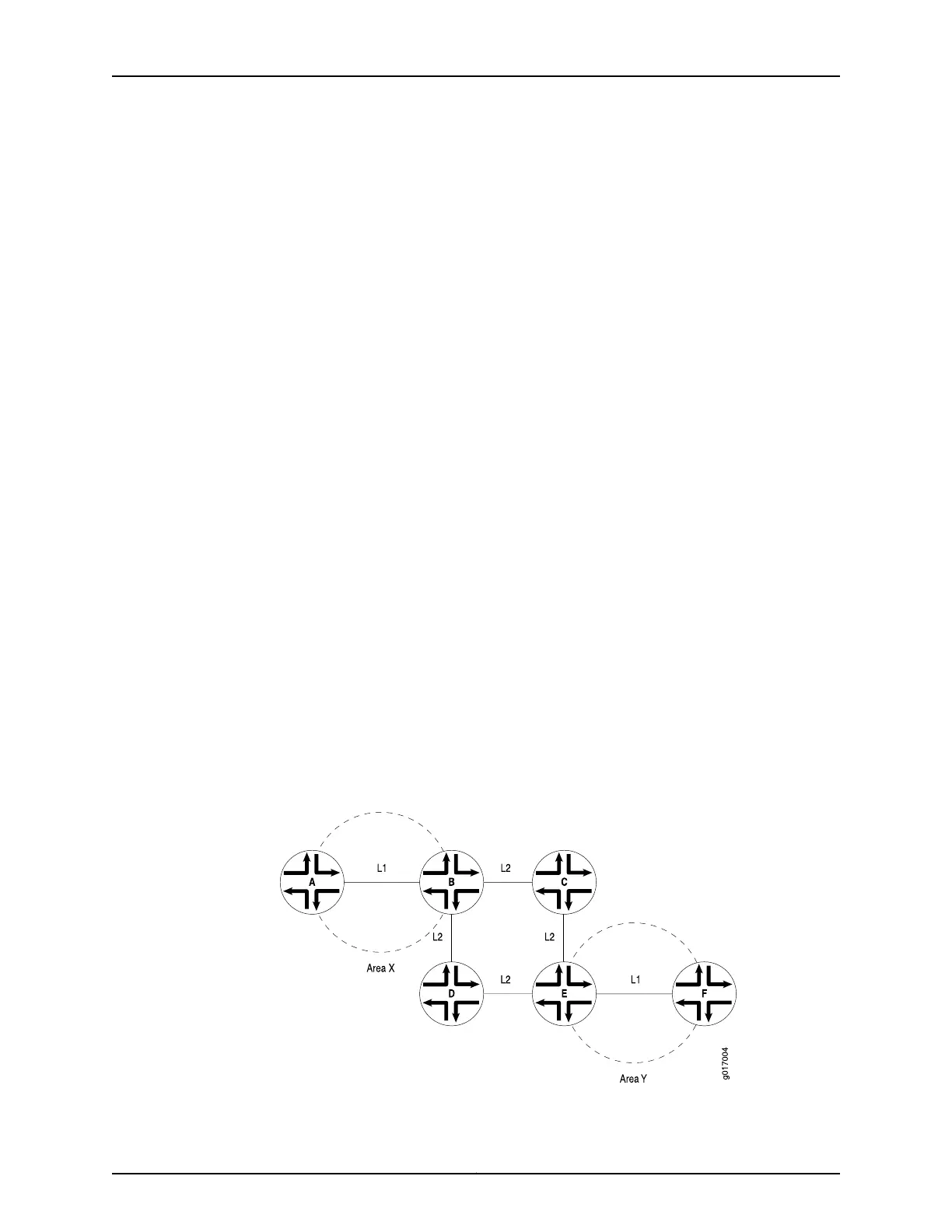requesting that the missing link-state PDU be transmitted. That routing device, in turn,
forwards the missing link-state PDU to the requesting routing device.
A PSNP is used by an IS-IS router to request link-state PDU information from a
neighboring router. A PSNP can also explicitly acknowledge the receipt of a link-state
PDU on a point-to-point link. On a broadcast link, a CSNP is used as implicit knowledge.
Like hello PDUs and CSNPs, the PSNP also has two types: Level 1 and Level 2.
When a device compares a CSNP to its local database and determines that a link-state
PDU is missing, the router issues a PSNP for the missing link-state PDU, which is returned
in a link-state PDU from the router sending the CSNP. The received link-state PDU is
then stored in the local database, and an acknowledgment is sent back to the originating
router.
Persistent Route Reachability
IPv4 and IPv6 route reachability information in IS-IS link-state PDUs is preserved when
you commit a configuration. IP prefixes are preserved with their original packet fragment
upon link-state PDU regeneration.
IS-IS Support for Multipoint Network Clouds
IS-IS does not support multipoint configurations. Therefore, when configuring Frame
Relay or Asynchronous Transfer Mode (ATM) networks, you must configure them as
collections of point-to-point links, not as multipoint clouds.
Installing a Default Route to the Nearest Routing Device That Operates at Both IS-IS Levels
When a routing device that operates as both a Level 1 and Level 2 router (Router B)
determines that it can reach at least one area other than its own (for example, in Area
Y), it sets the ATTACHED bit in its Level 1 link-state PDU. Thereafter, the Level 1 router
(Router A) introduces a default route pointing to the nearest attached routing device
that operates as both a Level 1 and Level 2 router (Router B). See Figure 26 on page 540.
Figure 26: Install Default Route to Nearest Routing Device That Operates
at Both Level 1 and Level 2
Copyright © 2017, Juniper Networks, Inc.540
ACX Series Universal Access Router Configuration Guide

